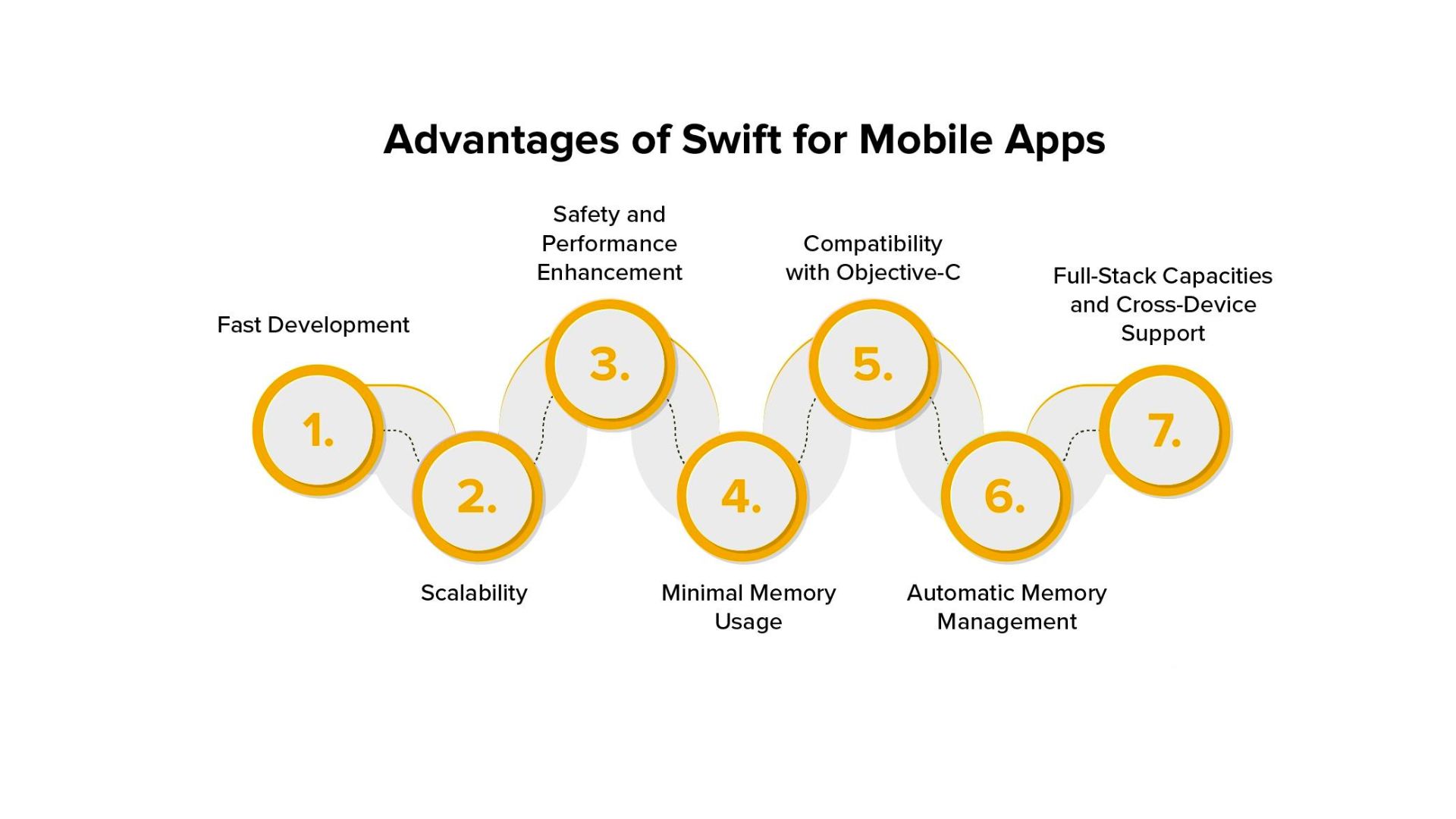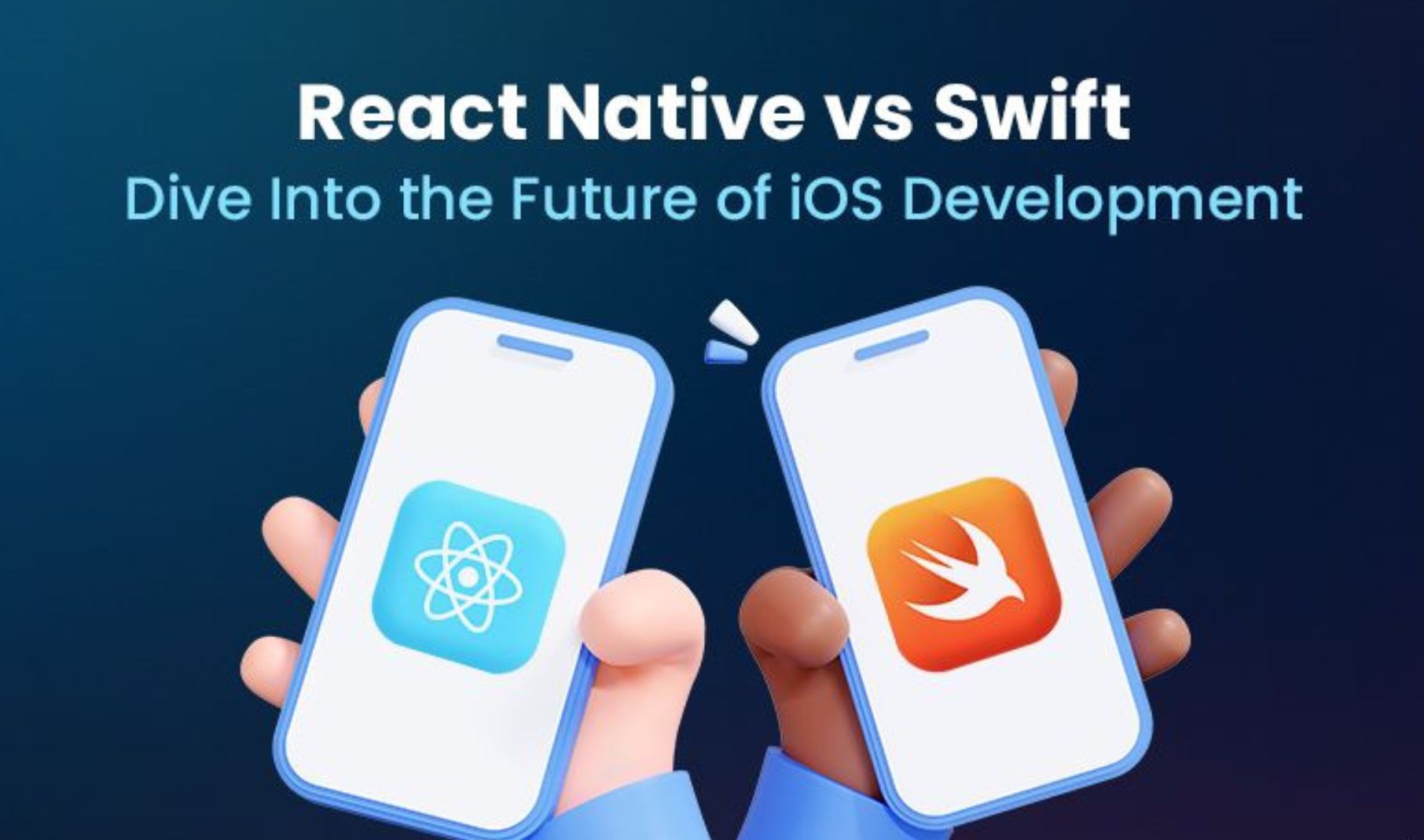Mobile app development has witnessed a surge in popularity in recent years, with businesses seeking to tap into the thriving mobile market. However, choosing the right framework for app development is crucial to ensure that your business achieves the desired success. In this article, we will compare two popular frameworks, React Native and Swift, and help you make an informed decision for your business.
What is React Native?
React Native is an open-source framework developed by Facebook that allows developers to build mobile apps using JavaScript. It uses the same design principles as React, a JavaScript library for building user interfaces. React Native enables the creation of cross-platform apps that can run on both iOS and Android devices, saving time and effort for businesses.

Unlocking the Potential Benefits of React Native
1.Faster Development: React Native enables hot reloading, allowing developers to see the changes in real-time without rebuilding the app. This significantly speeds up the development process.
2.Code Reusability: One of the major advantages of React Native is the ability to write code once and use it for both iOS and Android platforms. This saves developers' time and reduces the development cost for businesses.
3.Native-like Performance: React Native uses native components, resulting in an app that performs almost as well as a fully native app. This ensures a smooth user experience and high performance.
4.Large Developer Community: React Native has gained immense popularity among developers, resulting in a vast community. This community contributes to the development of numerous pre-built components and libraries, making app development more efficient.React Native Limitations That You Ought to Know
1.Limited Access to Native Features: Although React Native provides access to many native features, there might be cases where certain advanced or niche features are not readily available. However, these limitations can be overcome through custom native modules.
2.Performance Optimization: While React Native performs well in most cases, there might be instances where performance optimization becomes challenging, especially when dealing with complex apps or heavy animations.Now, let’s take a closer look at another popular framework for iOS app development – Swift.
What is Swift?
Swift is a programming language developed by Apple specifically for iOS, macOS, watchOS, and tvOS app development. It is designed to be modern, safe, and powerful. Swift offers numerous advantages and is widely used for building iOS applications.
Harness the Top Benefits of Swift for App Development
1.Performance: Swift is known for its superior performance compared to other programming languages. It allows developers to write efficient code that delivers fast and responsive applications.
2.Safety: Swift incorporates various safety features that minimize programming errors and improve app stability. It eliminates common programming issues like null pointer exceptions and helps developers write more robust code.
3.Ease of Learning: Swift has a user-friendly syntax that is relatively easy to learn, especially for developers who are familiar with other programming languages, such as Java or JavaScript.
4.Seamless Integration with Objective-C: Swift is interoperable with Objective-C, which means that developers can leverage existing Objective-C code while gradually adopting Swift. This ensures a smooth transition for businesses with legacy Objective-C codebases.
Limitations of Swift App Development
1.iOS-only: Unlike React Native, Swift is limited to iOS app development. If you plan to develop an app that runs on both iOS and Android, you will need to invest additional time and resources.
2.Smaller Developer Community: While Swift has been gaining popularity, its developer community is relatively smaller compared to React Native. This can mean limited resources and libraries available for specific requirements.Swift vs React Native: The Key Differences
Swift and React Native are both popular technologies for developing mobile applications, but they differ in several key aspects. Here are the key differences between Swift and React Native:
- Programming Language:
- Swift: Developed by Apple, Swift is a programming language specifically designed for iOS, macOS, watchOS, and tvOS app development. It is a statically-typed language that is compiled and optimized for performance.
- React Native: React Native uses JavaScript and React to build cross-platform mobile applications. While React Native allows developers to write code in JavaScript, there’s also the option to use native modules when necessary.
- Platform Support:
- Swift: Primarily used for iOS, macOS, watchOS, and tvOS development. Swift is not cross-platform and is limited to Apple’s ecosystem.
- React Native: React Native is cross-platform and supports both iOS and Android development. This makes it easier to maintain a single codebase for both platforms.
- Development Environment:
- Swift: Typically, developers use Xcode as the integrated development environment (IDE) for Swift development. Xcode is the official IDE provided by Apple.
- React Native: Developers can use various text editors or IDEs such as Visual Studio Code to write React Native code. The development environment for React Native is more flexible.
- Code Reusability:
- Swift: Code written in Swift is specific to the iOS platform, and there is minimal code reuse when targeting other platforms.
- React Native: React Native promotes code reusability across platforms, allowing developers to write most of the code once and use it on both iOS and Android.
- Performance:
- Swift: As a natively compiled language, Swift generally provides high performance. It can take advantage of all the hardware features of Apple devices.
- React Native: While React Native can achieve good performance, especially with optimization techniques, it may not match the performance of fully native apps in certain scenarios.
- Community and Ecosystem:
- Swift: Swift has a strong and growing community, particularly within the Apple development ecosystem. There is a wide range of libraries and resources available for Swift development.
- React Native: React Native has a large and active community. It benefits from the broader JavaScript and React communities, providing a rich ecosystem of libraries and modules.
- Development Speed:
- Swift: Swift development is focused on one platform, which can result in faster development times for iOS-specific projects.
- React Native: The ability to reuse code across platforms can lead to faster development cycles, especially for apps targeting both iOS and Android.
- Integration with Native Code:
- Swift: Swift can easily integrate with existing Objective-C code, and developers can leverage native iOS features seamlessly.
- React Native: React Native allows integration with native modules written in Swift or Java when access to specific platform features is required.
In summary, the choice between Swift and React Native depends on factors such as the target platforms, development speed, code reusability, and specific project requirements. Swift is ideal for exclusive iOS development, while React Native is a strong choice for cross-platform development, particularly if you want to maximize code reuse across iOS and Android.



